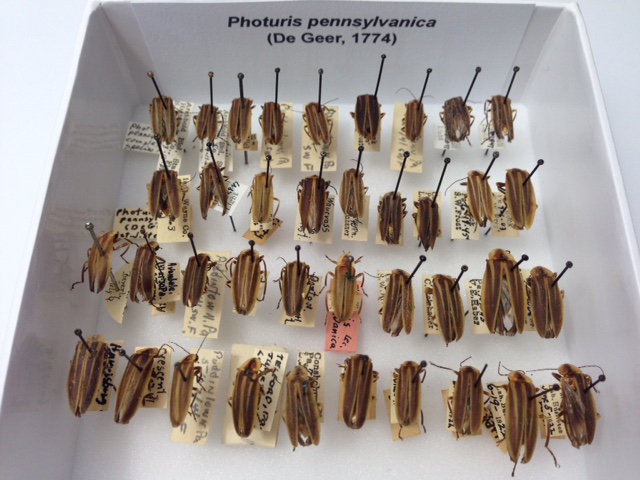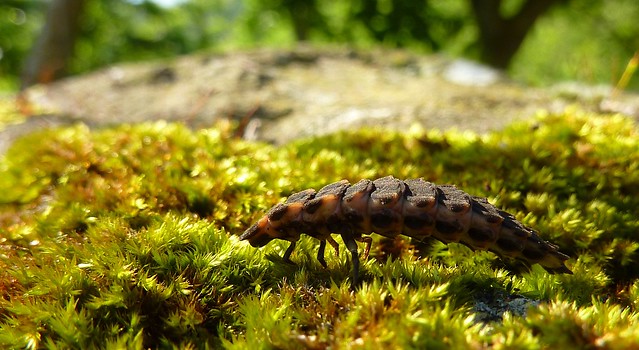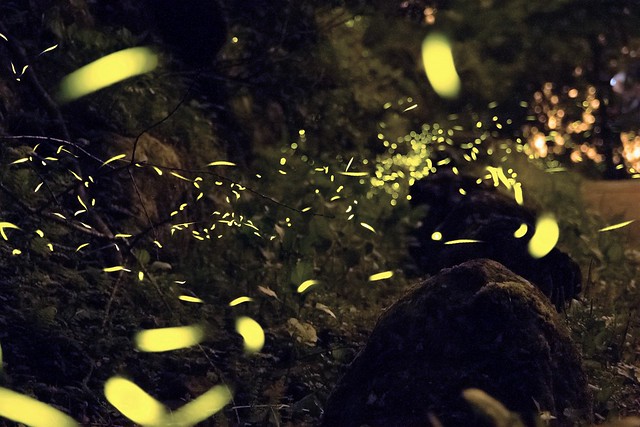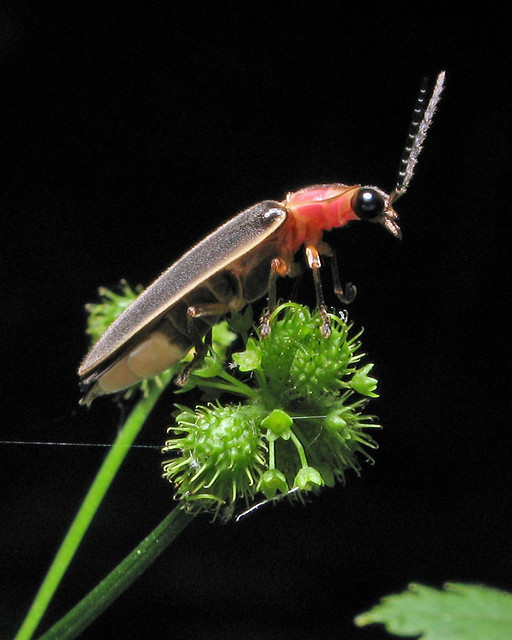Call it what you want, a lightning bug or a firefly, Photuris pennsylvanica (De Geer,1774) is the state insect of Pennsylvania! Since P. pennsylvanica is in the order Coleoptera, it is actually a beetle…not a true bug or a fly!

In general, fireflies can be found worldwide in warm to temperate environments that are humid; they have a preference for grassy to woodland habitats near bodies of water.
The lifecycle begins as larval fireflies hatch from eggs on the ground. While larval fireflies are known to eat invertebrates such as slugs and snails, the diet of adult fireflies is highly variable from nectar to other fireflies. Larvae burrow underground to overwinter, then emerge in the spring to feast again. In the late spring larvae burrow underground again to pupate, emerging as mature fireflies in the early summer (Buschman, 1984).

As the temperature rises, mature fireflies light up the night as a form of communicating with one another. Luciferin, luciferase, and ATP are the chemicals responsible for the fireflies’ glow (McElroy and DeLuca, 1978). This reaction is highly efficient, barely any of the energy is emitted as heat! (Click here for a quick lesson on bioluminescence.) Along with attracting a mate, fireflies use light to signal to predators that they are distasteful as well as to defend their territory. Flash patterns vary between species of fireflies and can be used to help identify different species (Lloyd, 1969). (Click here for a quick lesson on flash patterns.) Certain species (such as photinus) mimic the patterns of other species (like photuris) to attract mates (Lloyd, 1965).

Fireflies serve as good indicator species, in which species distribution and population sizes indicate the health and quality of an environment. Unfortunately, firefly populations are on the decline. Potential causes of their decline include light pollution, land development, and environmental degradation.
To learn more about this phenomenon, researchers at institutes such as Clemson University are engaging citizen scientists to help track and record firefly populations. Last year, Clemson hosted the Vanishing Firefly Project to create a firefly census. To successfully do this, researchers created firefly counter apps for Android phones and iPhones that allowed volunteers to record fireflies based on the type of light flashes produced. More information on this project can be found here and here.

Each year, the Pennsylvania Firefly Festival takes place near Tionesta, PA. Don’t forget to mark your calendar, this year the festival will take place on June 25th at the Black Caddis Ranch!
Lastly, the firefly, specifically the common eastern firefly (Photinus pyralis), is also one of the state insects of Tennessee.
The next post in this series will showcase the state insect of quite a few states…the European honey bee (Apis mellifera)!
Leave a Reply